Hello Hive
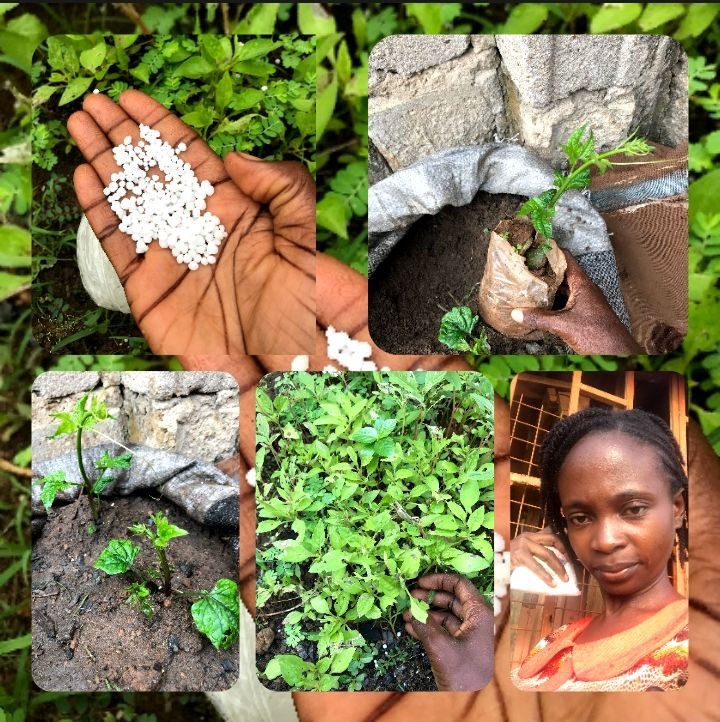
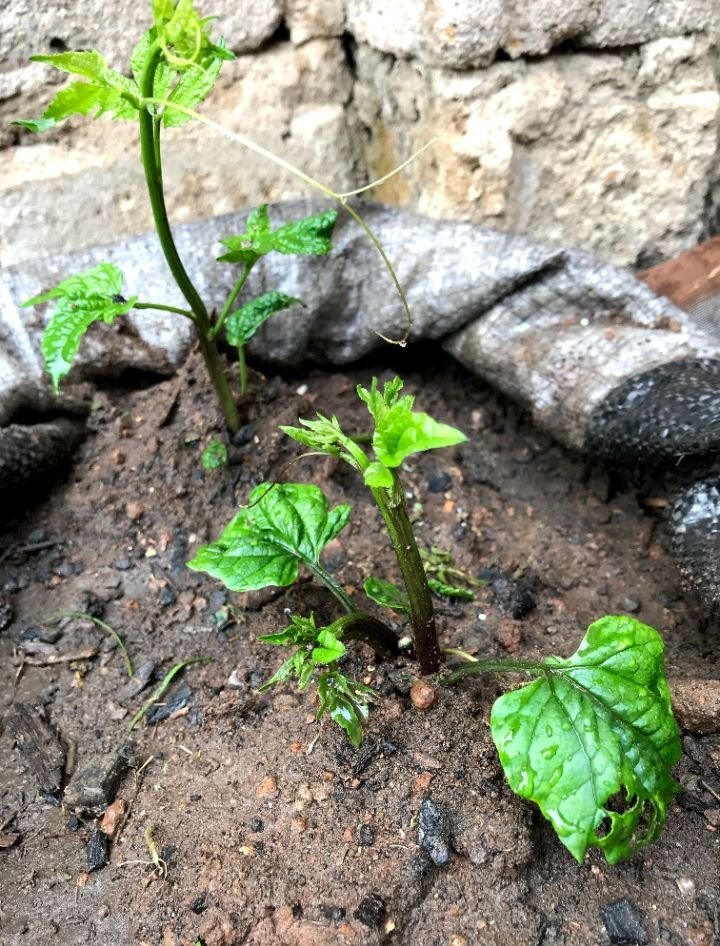
A single pod of fluted pumpkin seed can contain as many as 100 seeds within. From planting just two seeds like this, I can be lucky to get more than one pod with several seeds within it. There are so many benefits to planting this. These two single seedlings can produce so many vegetables that they can last me for at least 6 months of constant vegetable supply. Coupled with its nutrients, I can't wait for this to grow to maturity and level of harvest.
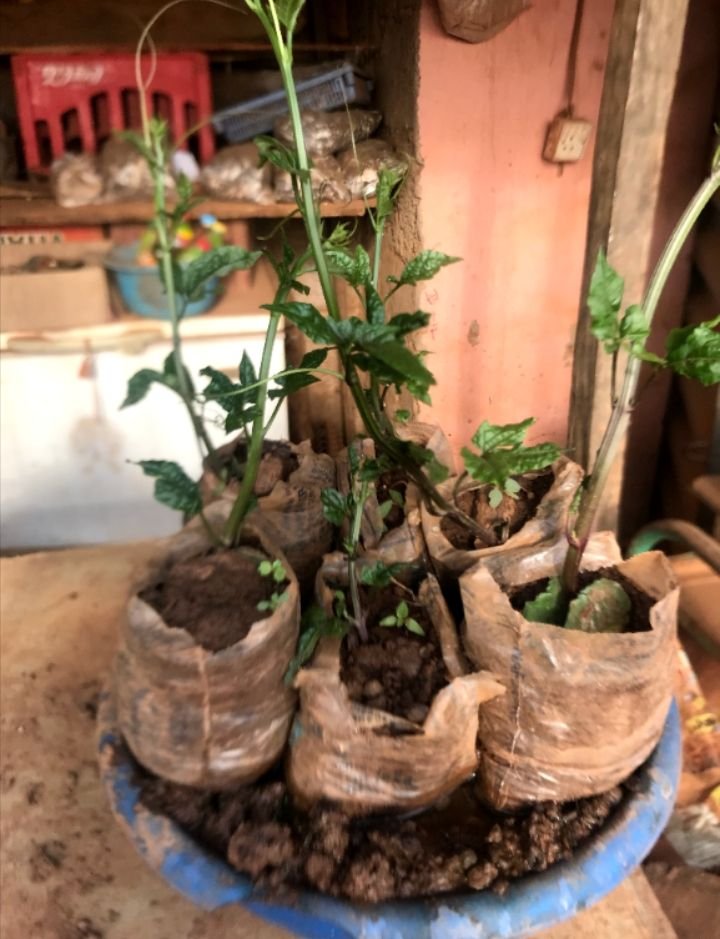
I love fluted pumpkins, especially because of the blood generation factors and nutrients they contain. As someone who is often plagued by anemia, this will constantly help to boost my blood levels and cut down on the need to renew my blood tonics.
It has really been tested and proven for this factor, not by anyone but my own mother, who has fed me the extracted juice and veggies to boost my blood level whenever I have anemia. Since then, fluted pumpkins have been added to my everyday diet. I was much healthier and chubbier then, and having realized how important this is to my health, I believe that you have now understood the eagerness behind why I want it established here and ready for consumption in the shortest possible time.
The replanting was done in the former sack where I had lost the first two seedlings, hoping that these would survive in the soil. If it doesn't, then my insinuation about the quality of the soil will be confirmed. By then, I will have to look for more fertile soil to fill the sack with. This is how I have to just keep trying until my desire to have a fluted pumpkin canopy comes true.
Here, I dug a hole in the sand.
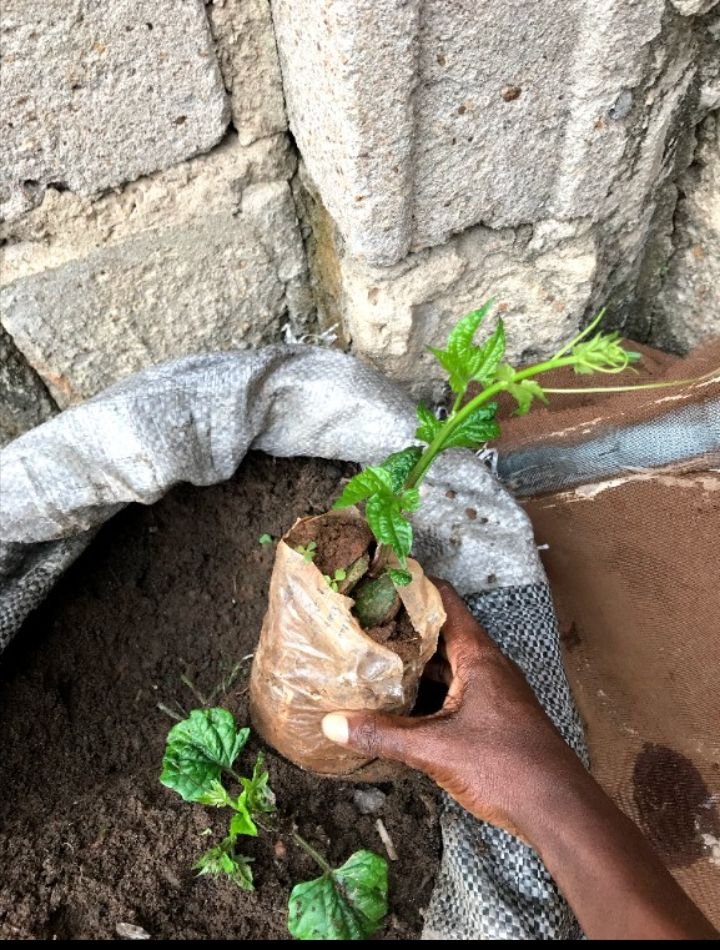
I carefully tore out the nylon sachet it was grown in and placed it in the soil without disturbing the roots.
It has been planted in sandy clay-loam soil that has stuck well with its roots.

Having done that, I covered it with the sack sand and watered it really well.
Next, it was time to add some fertilizer to my Lagos spinach veggies. It has germinated really well and was not badly affected by the infestation that earlier caused the death of the other vegetable type. Remember that I didn't want to add inorganic fertilizer earlier because it seems like I have no choice since the veggies have been planted?
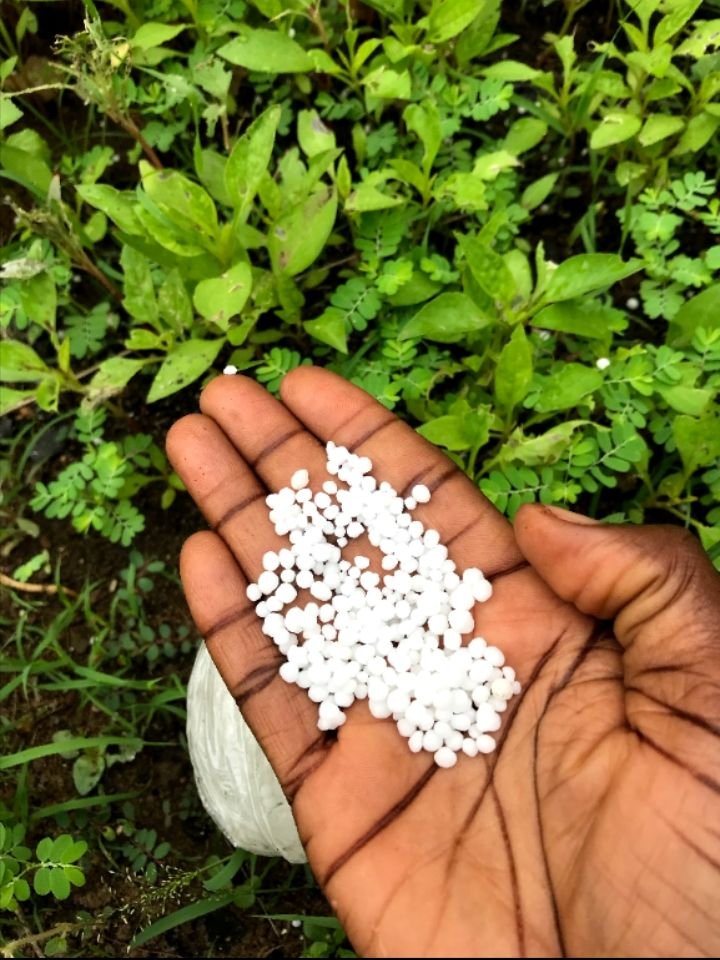
For farmers who use organic fertilizer and animal dung, it is often advisable to add them to the soil before planting our crops so that we will not be consuming nematodes along with our veggies when dung is sprayed directly over them.
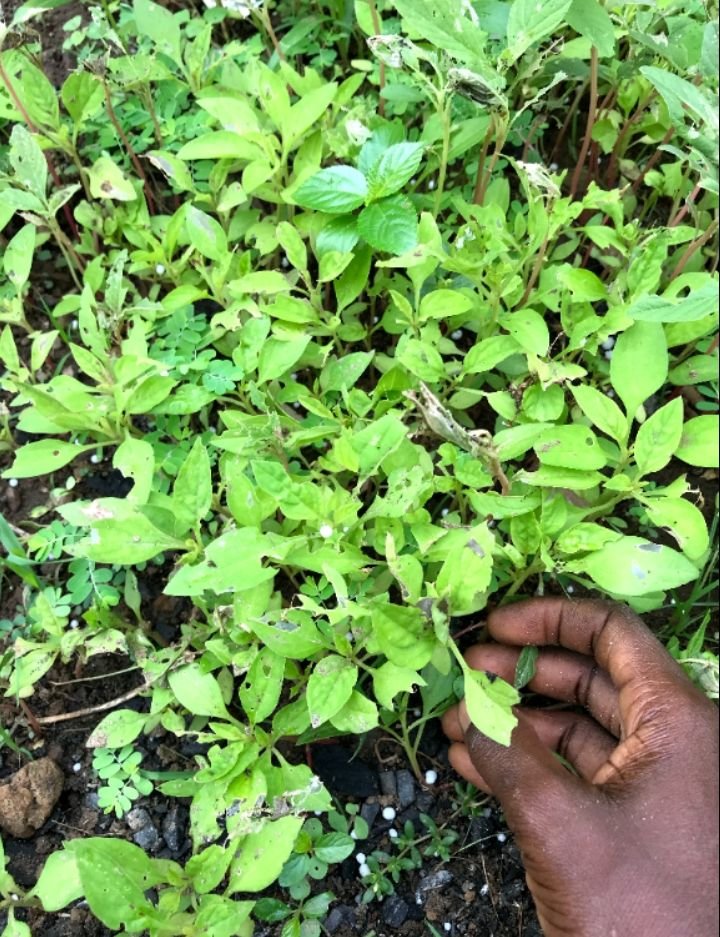
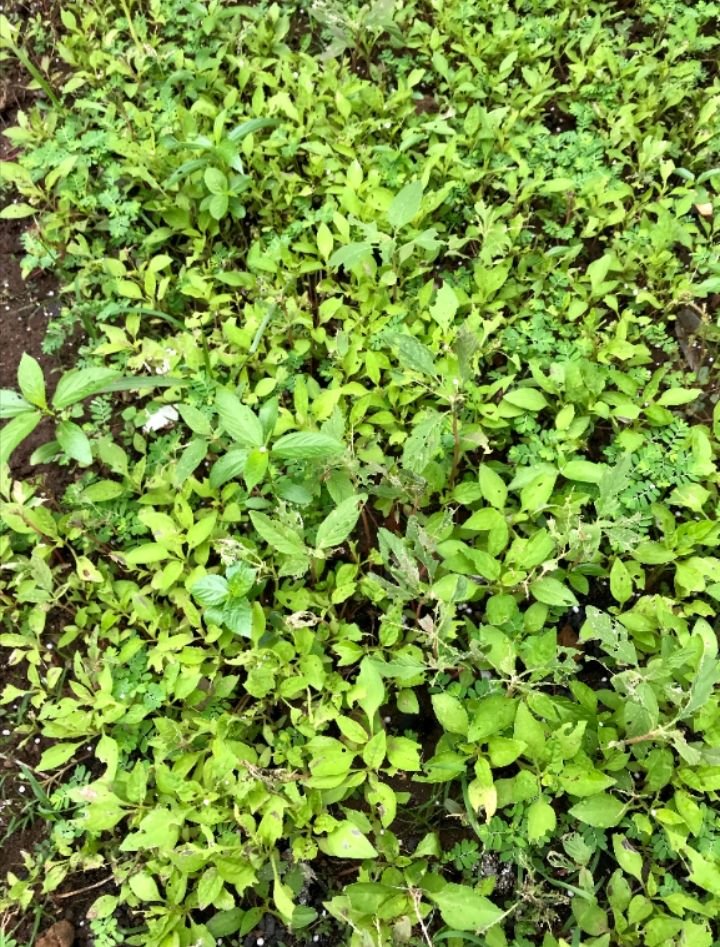
The spinach has been showing stunted growth and yellowing of the leaves. In order not to lose out and harvest nothing from here in the end, I decided to add a very small quantity of this inorganic N.P.K. fertilizer.
I purchased this at the seed store without noticing that it was big-grain fertilizer. This type of fertilizer often comes in two forms that I have always known. The brown-colored one and this white one. The white-colored ones often come in two grain sizes: a large one and a smaller or fine one.
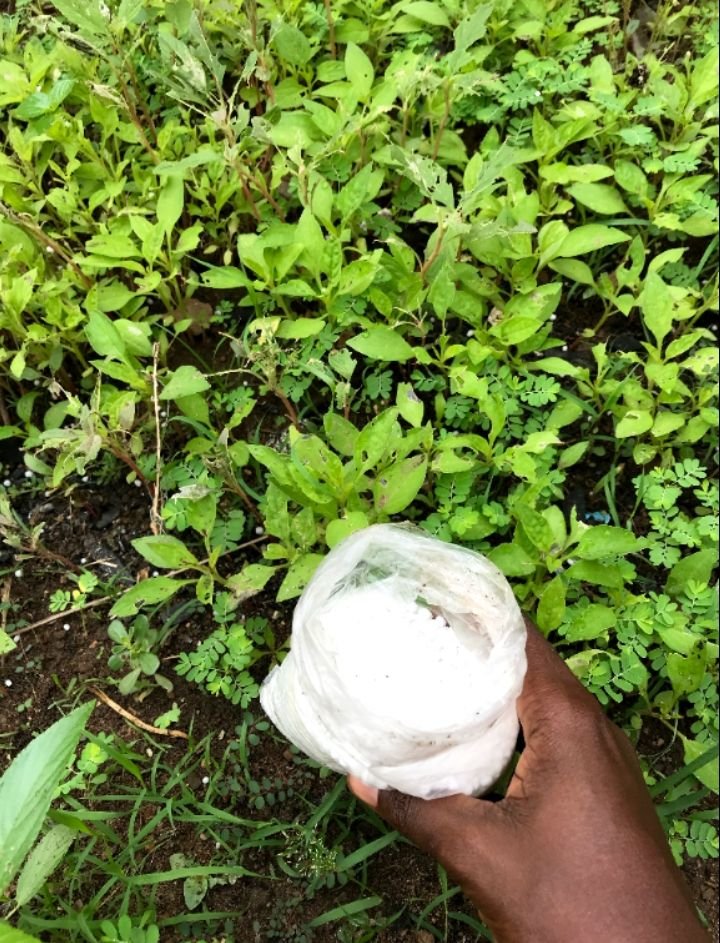

I wish that I had bought the smaller grain-sized ones; one often dissolves into the soil almost immediately, and in approximately two weeks, one will begin to notice the changes in our crops.
These large grains don't often dissolve immediately, and it might take about 3 weeks for any notable changes to begin. This is so much time for a vegetable I hoped would be harvested in exactly one month after planting it.
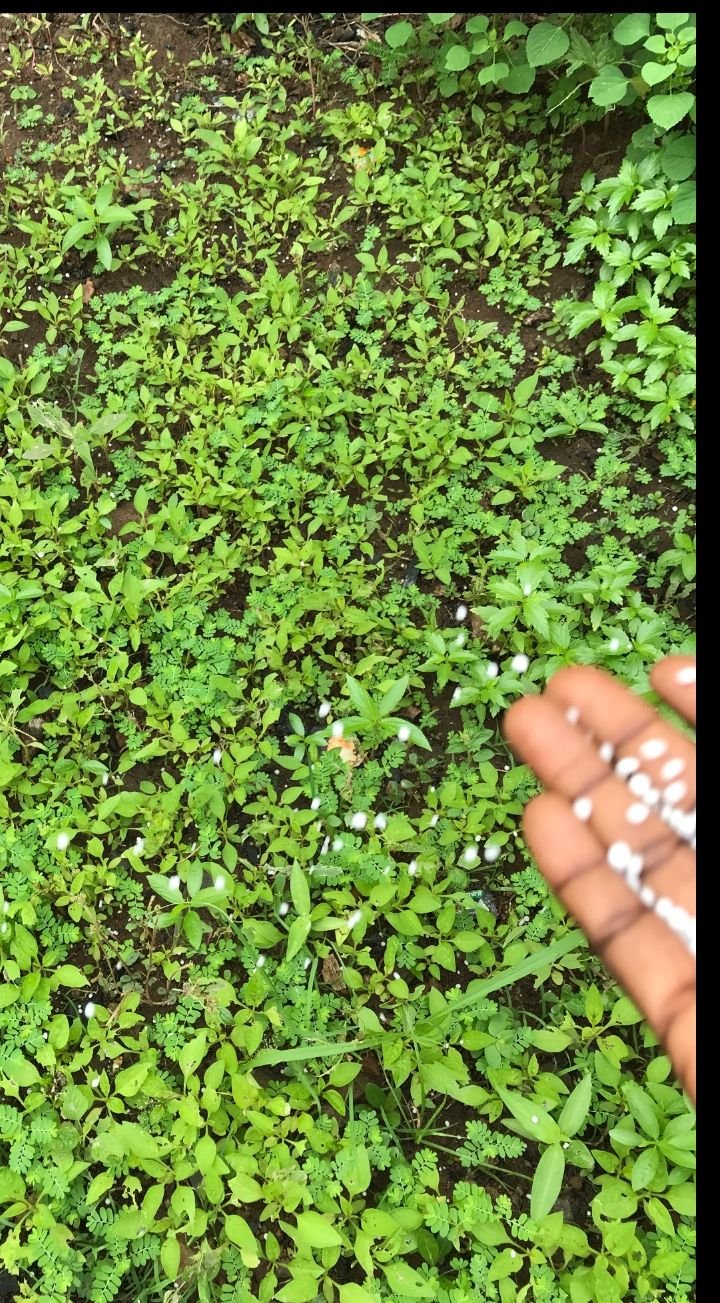
After spreading fertilizer I had to water this so that the grains can begin to dissolve as I wished that this will begin work almost immediately.
The veggies are already one month old and are still not close to being harvestable. Let's wait and see if the veggies can be saved and if any harvest will eventually happen here And that sums up my homestead activities for today
All images are mine
Thank you for stopping by.
Considering the busyness in Lagos, and the way we have forgotten how beneficial agriculture and gardening can be for well being amd nutrition, I commend your efforts 😇
Hey Monica! Remember to post using inLeo to make the most out of your Premium subscription and to potentially get more votes!
Will do, thank you